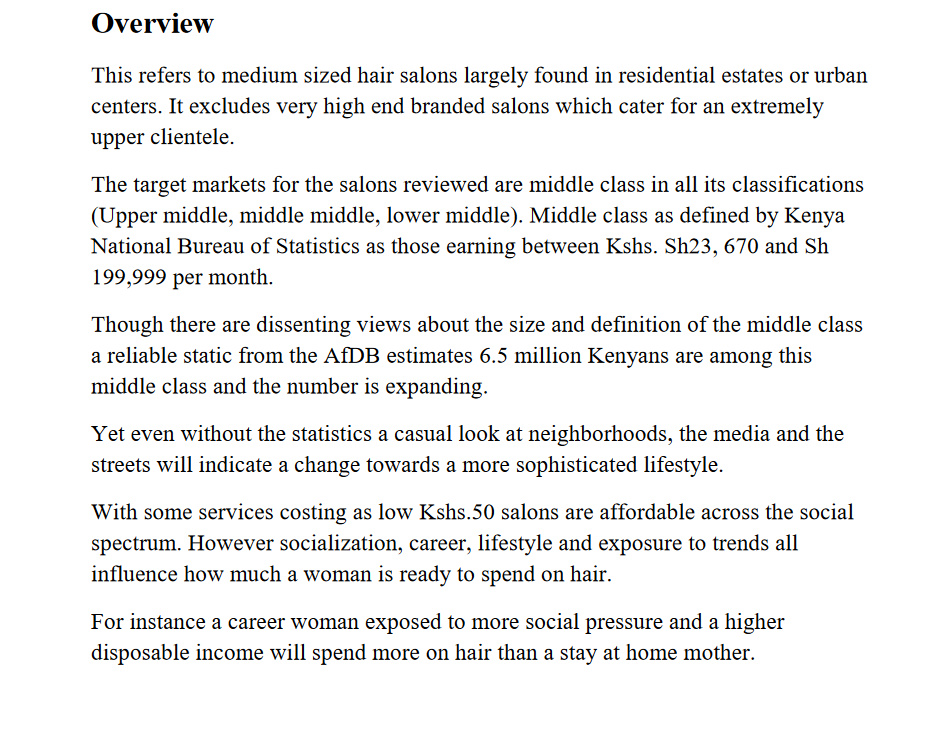Hair Salon Business Plan
Hair Salon Business Plan

Hair Salon Business Plan Overview
This Hair Salon Business Plan focuses on the Hair Salon Business. It refers to medium sized hair salons largely found in residential estates or urban centers. It excludes very high end branded salons which cater for an extremely upper clientele.
The target markets for the salons reviewed are middle class in all its classifications (Upper middle, middle middle, lower middle). Middle class as defined by Kenya National Bureau of Statistics as those earning between Kshs23, 670 and KSh199,999 per month.
Though there are dissenting views about the size and definition of the middle class a reliable static from the AfDB estimates 6.5 million Kenyans are among this middle class and the number is expanding.
Yet even without the statistics a casual look at neighborhoods, the media and the streets will indicate a change towards a more sophisticated lifestyle.
With some services costing as low Kshs.50 salons are affordable across the social spectrum. However socialization, career, lifestyle and exposure to trends all influence how much a woman is ready to spend on hair. For instance a career woman exposed to more social pressure and a higher disposable income will spend more on hair than a stay at home mother.
The Bigger Picture
Among the factors affecting the Salon business at the national level include:
- Population – The higher the population the larger the market; the more people there will be purchasing Salon services. Kenya’s population is growing which means the customer base for the salon business is increasing.
- Inflation + Disposable Income – Inflation affects the disposable income and thus the amount of money an individual spends on products not considered to be necessities. Though inflation has slightly increased it’s not to the level that has largely affected consumption of hair and beauty services among the middle class. This is because grooming is seen as important for upward mobility in business, work place or socially.
Outlook Future of Hair Salon Business
We predict a middle class inflation rate of above 8.50 % would lead to significant cutting back of the amount spent on hair across the middle class.
Barring any drastic economic or political shift the inflation rate is likely to remain at the present levels and not reduce significantly until June 2020.
The lower middle class will slightly reduce the amount they spend on hair for instance by hesitating to follow trends and opting for hair styles which last longer.
Societal pressures in terms of what a woman is expected to be, the emotional need to stand out and belong by following trends and the association of grooming with upward mobility will see women in the middle and upper class not cut their salon and beauty spending significantly despite economic pressures.
The purchase of the local consumer beauty company Interconsumer Products by the French multinational L’Oreal at a price of over Kshs. 3 billion is a vote of confidence in the long term growth of the beauty industry in Kenya. Of note is the wide range of hair care products under the Nice & Lovely brand that were previously sold by Interconsumer.
Based on the purchase of Interconsumer Products and the strategy informing it, then its safe to say that keeping everything constant the hair industry will continue to grow for the next 5 years.
Download Hair Salon Business Plan / guide here